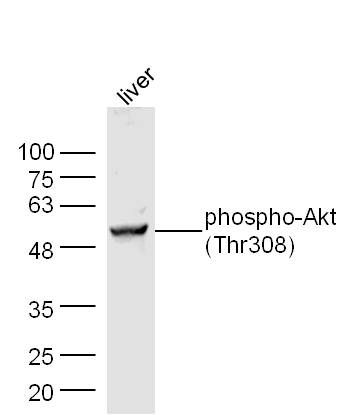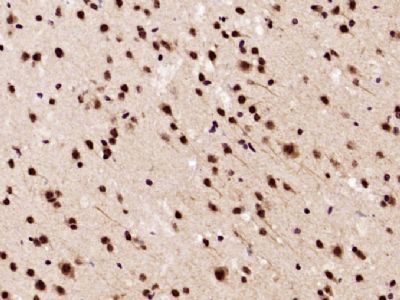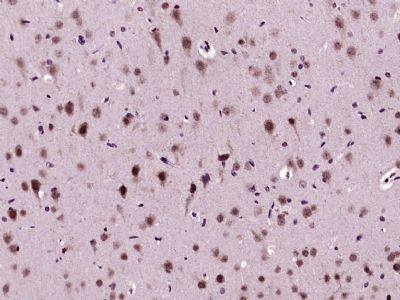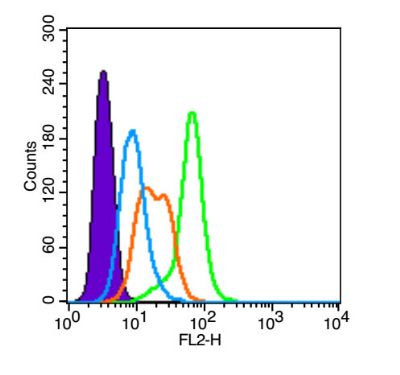[IF=2.16] Li, Xinxin, et al. "Long-term thermal manipulation in the late incubation period can inhibit breast muscle development by activating endoplasmic reticulum stress in duck (Anasplatyrhynchos domestica)." Journal of thermal biology 70.Pt B (2017): 37. WB ; Other Species.
[IF=4.2] Zhang, Weidong, et al. "Decrease in male mouse fertility by hydrogen sulfide and/or ammonia can Be inheritable." Chemosphere (2017). IHSLCP ; Mouse.
[IF=5.31] Ning Zhong. et al. Apatinib inhibits the growth of small cell lung cancer via a mechanism mediated by VEGF, PI3K/Akt and Ki-67/CD31. 2021 Sep 30 IF ; mouse.
[IF=3.718] Qi Hao. et al. Taurine stimulates protein synthesis and proliferation of C2C12 myoblast cells through the PI3K-ARID4B-mTOR pathway. Brit J Nutr. 2021 Dec;:1-27 WB ; Mouse.
[IF=2.775] Ji-sheng Wang. et al. Explore the effects of pulmonary fibrosis on sperm quality and the role of the PI3K/Akt pathway based on rat model. 2021 Dec 21 WB ; Rat.
[IF=2.794] Shi, Linjie. et al. Memory regulation in feeding habit transformation to dead prey fish of Chinese perch (Siniperca chuatsi). 2021 Sep 28 WB ; Chinese perch.
[IF=5.715] Yu Wang. et al. Zinc application alleviates the adverse renal effects of arsenic stress in a protein quality control way in common carp. Environ Res. 2020 Dec;191:110063 WB ; Fish.
[IF=3.69] Jisheng Wang. et al. To study the mechanism of Cuscuta chinensis Lam. And Lycium barbarum L. in the treatment of asthenospermia based on network pharmacology. J Ethnopharmacol. 2021 Apr;270:113790 WB ; Rat.
[IF=3.216] Chao Lu. et al. Inhibition of Pre-B Cell Colony Enhancing Factor Reduces Lung Injury in Rats Receiving Cardiopulmonary Bypass. Drug Des Dev Ther. 2021; 15: 51–60 WB ; Rat.
[IF=11.508] Qinyu Ma. et al. Osteoclast-derived apoptotic bodies couple bone resorption and formation in bone remodeling. Bone Res. 2021 Jan;9(1):1-12 WB ; Mouse.
[IF=2.666] X Zhou et al. Modulating NMDA receptors to treat MK-801-induced schizophrenic cognition deficit: effects of clozapine combining with PQQ treatment and possible mechanisms of action. BMC Psychiatry. 2020 Mar 6;20(1):106. WB ; rat.
[IF=7.65] Wang Y et al. Targeting the miR-122/PKM2 autophagy axis relieves arsenic stress。 Journal of Hazardous Materials. 2019 Sep. WB ; Chicken.
[IF=3.043] Zheng R et al. Leucine attenuates muscle atrophy and autophagosome formation by activating PI3K/AKT/mTOR signaling pathway in rotator cuff tears. Cell Tissue Res. 2019 Apr 24. WB ; Rat.
[IF=6.638] Wang Z et al. Light-activatable dual prodrug polymer nanoparticle for precise synergistic chemotherapy guidedby drug-mediated computed tomography imaging. Acta Biomater. 2019 May 22. WB ; Human.
[IF=7.74] Li et al. The dual PI3K/mTOR inhibitor NVP-BEZ235 inhibits proliferation and induces apoptosis of burkitt lymphoma cells. (2015) Cancer.Cell.Int. 15:65 WB ; Human.
[IF=1.785] Yu Zheng. et al. Advanced oxidation protein products trigger apoptosis and block epithelial‑to‑mesenchymal transition in crypt epithelial cells. Exp Ther Med. 2021 Aug;22(2):1-6 WB ; Rat.
[IF=2.276] Wang Ji-sheng. et al. A Bioinformatic Investigation of the Mechanism Underlying Migraine-Induced Erectile Dysfunction. Biomed Res Int. 2021;2021:6674643 WB ; Rat.
[IF=2.311] Dezhi Wu. et al. Long non‑coding RNA maternally expressed gene 3 affects cell proliferation, apoptosis and migration by targeting the microRNA‑9‑5p/midkine axis and activating the phosphoinositide‑dependent kinase/AKT pathway in hepatocellular carcinoma. Oncol Lett. 2021 May;21(5):1-8 WB ; Human.
[IF=2.942] Li X et al. MicroRNA-33a negatively regulates myoblast proliferation by targeting IGF1, follistatin and cyclin D1. Biosci Rep. 2020 Jun 26;40(6):BSR20191327. WB ; Duck.
[IF=1.935] Ou X et al. Desumoylating Isopeptidase 2 (DESI2) Inhibits Proliferation and Promotes Apoptosis of Pancreatic Cancer Cells through Regulating PI3K/AKT/mTOR Signaling Pathway. (2018)Pathol. Oncol. Res. Nov 8. WB ; Human.




